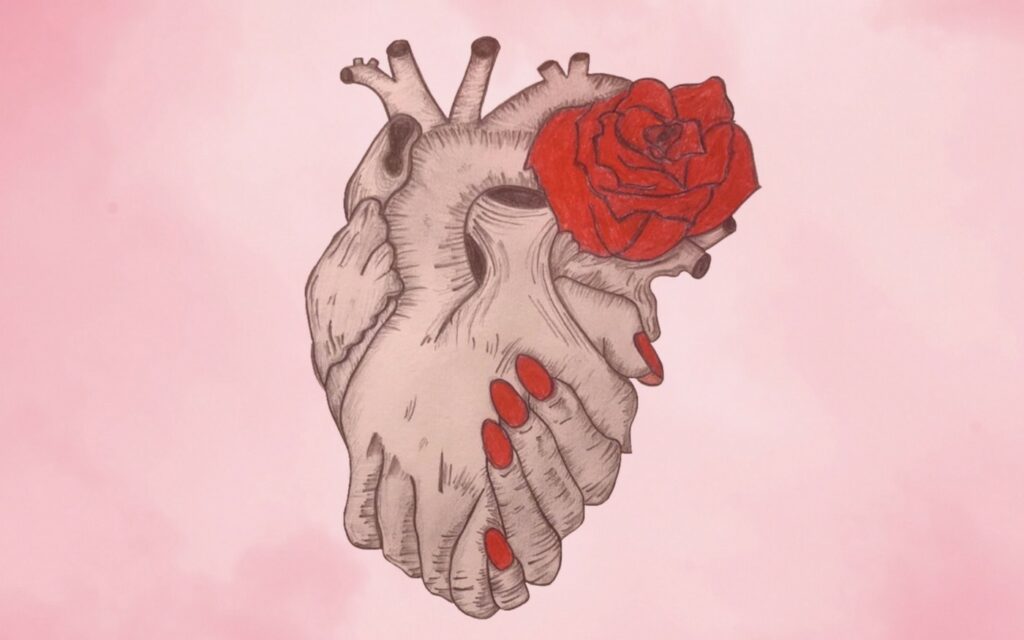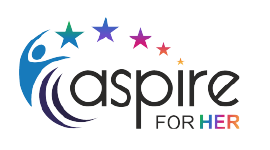Women in Cardiology
by Aashna Suvarna
Matters of the Heart

It was like any other vacuous quarantine Sunday. I was sitting in my living room trying to watch my professor talk about organic chemistry on Zoom. As if my impatience didn’t already make it hard enough to grasp what was being said at 2x speed, my father was sitting right across me and attending a cardiology webinar, where cardiologists from across the country were discussing ways in which the COVID-19 pandemic has affected their specialty. I plugged in my earphones and focused all (or almost all) of my attention on the retrosynthetic reactions of alkenes, the voice of my professor drowning out the voices of the men talking about ‘ventricular tachycardia’ and ‘pulmonary edemas’.
Pause. Rewind — ‘the voices of the men’? I plucked one earphone out and listened keenly to the deep, low pitched voices discussing all things cardiology for about 2 minutes. I frowned, straining my ears, as I waited for the slightest hint of a voice that would break the monotony of these deep voices. But all in vain. I walked across the room and took a peek at my father’s laptop screen, and my hunch was confirmed. Shirts and ties, moustaches and beards, appeared repeatedly as my eyes scanned the little rectangles stacked neatly in concentric rows. The one and only woman that was on the panel had the title of ‘molecular biochemist’ next to her name. Bewildered, I took a quick trip down memory lane as flashes of all the times I had accompanied my father to work raced past me — the times he went for rounds in the hospital, conferences, dinner parties or trips with colleagues. I could clearly remember a good number of his fellow cardiologists that I had met or heard about, but curiously enough, my mental list did not include a single female cardiologist.
I was not ready to accept another way in which Grey’s Anatomy, where 4 out of 5 cardiothoracic surgeons through the series are women, was proven to be a washed-out representation of the medical industry. So, later that evening, I brought this up with my dad, with the hopes that he would brush it off saying it really isn’t that bad and I could go back to living in my blissful, Grey’s-Anatomy-fueled bubble again. But instead, I learnt that from his batch, there was not a single woman who opted for Internal Medicine (a precursor to Cardiology) as their choice of specialty. Blown away by this atrocious anomaly, I frantically took to the Internet, hoping for results that would prove one of the two possible rationales — all of this was just one big coincidence and my father’s batch was just a dreadful exception, or my old man’s memory was fading sooner than I expected. I came across a report that showed that while males and females have approximately equal representation in medical schools, less than 13% of practicing cardiologists are female. These shocking numbers were enough to confirm my apprehensions about the massive underrepresentation of women in Cardiology.
So what is it, that makes girls like me go from doodling little hearts all over our notebooks in school to not wanting to pursue, work with, or heal hearts as doctors? Most of the hesitation is due to certain attitudinal barriers. Cardiology is notorious for its long hours and emergency calls which amount to bleak prospects of having a good work-life balance. Women tend to, or are made to, view the low work-life balance prospects of Cardiology in a more negative light than males. Domestic responsibilities are seen to be the job of a woman more than a man, not just by women themselves but also by members of their family. Well, just like heart attacks can come at any hour, so do babies, making ObGyn a demanding specialty too. However, females make up about 60% of obstetricians and gynaecologists. Clearly, there is something else that is driving women away from Cardiology specifically.
For starters, the male dominated culture of Cardiology itself — the lack of female role models, implicit bias within the system, and just the ‘boys club’ culture in general — is a huge deterrent. While male mentors also provide excellent guidance and possess profound knowledge of the field, a female role-model can give more insight into how to deal with the more personal difficulties faced in the field as a woman.
Cardiology being an all-men club doesn’t just exist on the side of the doctors — women ignoring their cardiac health is a pressing concern too. While younger women are at lower risk as they are protected by their body’s estrogen, when women hit menopause they face the same risks, if not more, as men face for heart attacks. Yet, women tend to ignore these risks. In a study co-investigated by me during an internship at a Cardiac Rehabilitation Centre in Mumbai, it was found that out of all the male patients advised Cardiac Rehab as a mandatory post-surgery practice, 42% of the male patients enrolled into the program diligently. Contrarily, female attendance was less than half, standing at 19% of all female patients that were recommended enrolment. Same surgery, same risks, same advice, but notably different turnouts. In a survey carried out to investigate the causes for this disparity, ’familial obligations’ and ‘personal responsibilities’ emerged as the top two reasons indicated by women. Having more women cardiologists can help make these numbers better as it increases patient relatability. They can empathise with their female patients’ concerns for their responsibilities back home, and urge them to take their cardiac health more seriously.
It is sufficient to say that Cardiology needs more women as much as women need Cardiology. Concerted efforts of people both directly and indirectly affiliated with the medical industry is the need of the hour. Here are some ways we can work towards achieving this no matter what our role in society is:
If you’re not directly affiliated with the field of medicine: Support the women in your life when they decide to pursue a demanding career like Cardiology. Normalise intensive studying/training before and after marriage. To do this, it is imperative to increase the dialogue for the need of increased representation of women in Cardiology in India particularly. While browsing the Internet on this topic, there was just one article of Indian origin. While Western countries have created special programs to address this issue and carried out several studies to investigate the causes, we stay silent and too comfortable in our state of oblivion. This is ironic, since the Indian cardiology community owes its foundations to Dr. S. I. Padmawati, also known as ‘The God of Cardiology’ in India (who was practicing at age 101), for establishing the first cardiology subspecialty course in the country.
If you’re currently a medical practitioner/medical professor/directly associated with Cardiology: Male leaderships can also sow the seeds for women’s professional advancements — it is not just men/women supporting women but cardiologists supporting cardiologists. Some reforms in the way our hospitals work, like introducing the concept of group practice/working in shifts for more flexible hours, equitable maternity/paternity leaves and offering tele-consulting as an option, including daycare facilities in hospitals where doctors can safely drop off their children while they tend to patients — will not just help women but also make Cardiology a more sustainable and attractive specialty for men. Increasing representation of women in National Cardiology Organisations can lead conversations on underrepresentation, and motivate aspiring female trainees to pick this specialty. Finally, addressing and being more conscious about implicit bias in the system that might discriminate against women trying to enter the field, that include questions regarding plans of marriage or having children in interviews/recruiting processes/leadership position offers. We need innovations and reforms not just in the way we deliver healthcare, but also in the way we practice it.
If you are a woman aspiring to pursue a male dominated specialty: this is not just restricted to Cardiology, but specialties like urology and orthopaedics amongst others that are known to have a majority of male physicians — don’t back down. Any doctor, whether male or female, requires resilience, passion and determination — use that to drive you through several situations where you might find yourself being the only woman in the room. If you face any kind of discrimination, reach out to someone and don’t stop till you find someone who listens. Patients, the cardiology community, upcoming medical students — we all need you. Get inspired by the work of previous female physicians and continue to inspire young aspiring female cardiologists by, quite literally, putting your heart into your work.
In a world full of Preston Burkes, be a Christina Yang!
REFERENCES:
Erickson, Author Mandy, et al. “Why Are so Few Interventional Cardiologists Women? A New Study Offers a Few Clues.” .
Garloch, Karen. “Female Ob-Gyns Are Now the Majority.” Novant Health | Healthy Headlines, 31 Oct. 2018.
Suvarna, Aashna T, Minocha, Janhavi M . “Gender Bias in Cardiac Rehab.” 2017.
Aashna Suvarna is a Campus Ambassador at AFH
Our Communities
We’d love to hear your thoughts too.
Be a part of the conversation and exchange of ideas by joining our community.
Submit a Comment
Our communities
Upcoming events
Can’t get enough? Explore our upcoming events and register to attend as many of them as you like.
Categories
Trending Posts
Recent posts
Buzzing right now
There’s a lot going on in these communities
at the moment. Join them now, as a member
or as a supporter.
SheDares
EntrepreNaari
NotAlone

